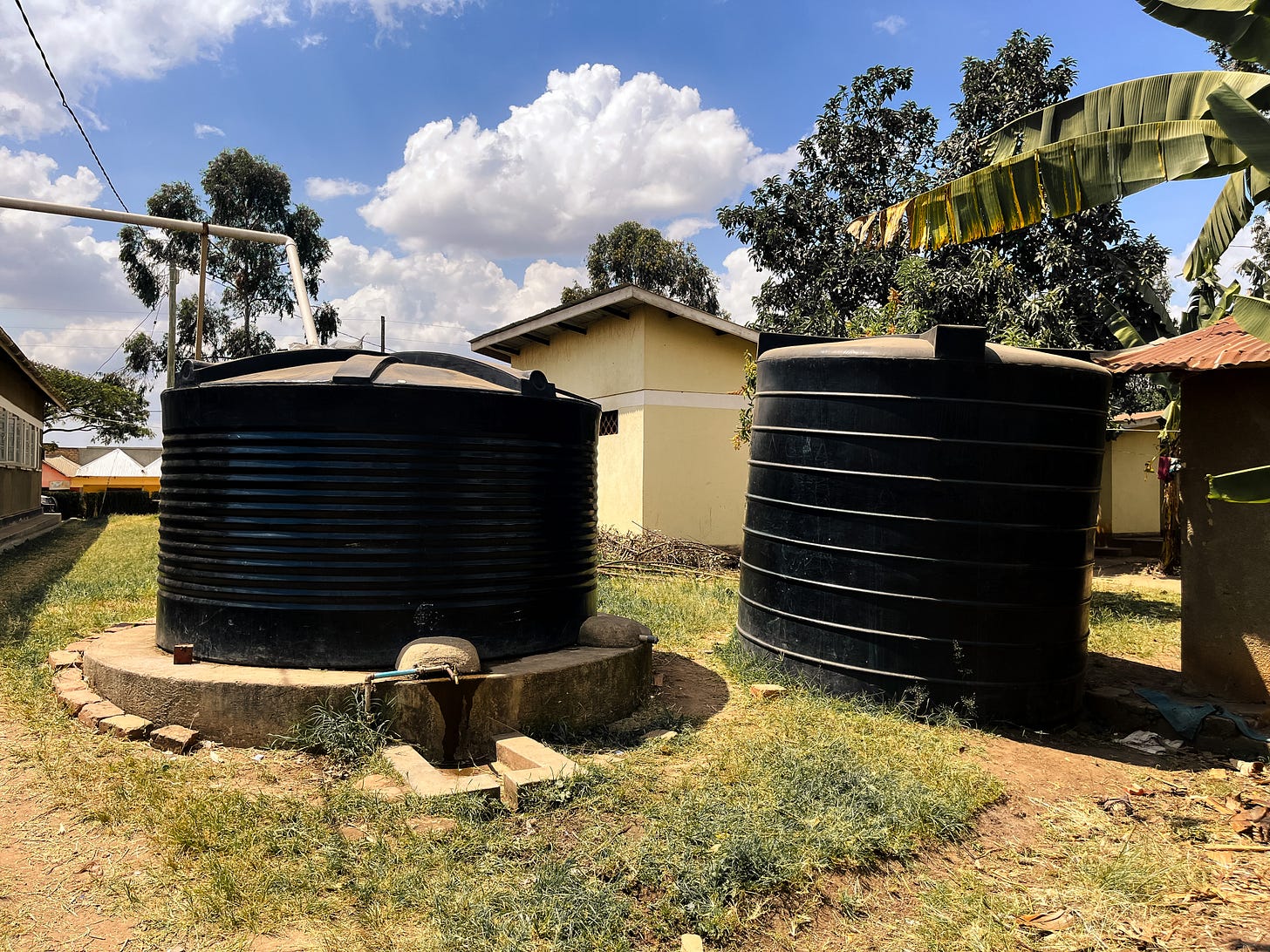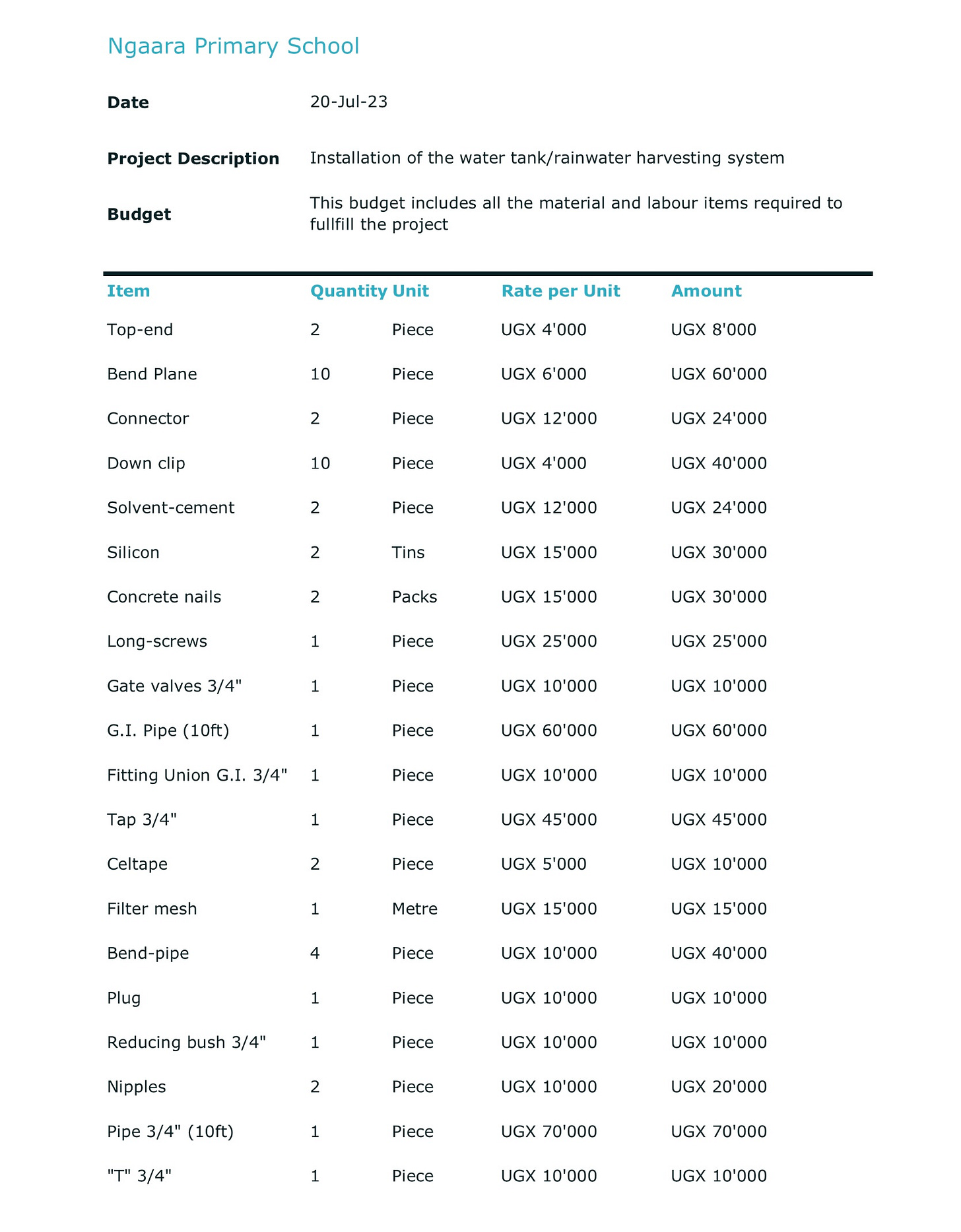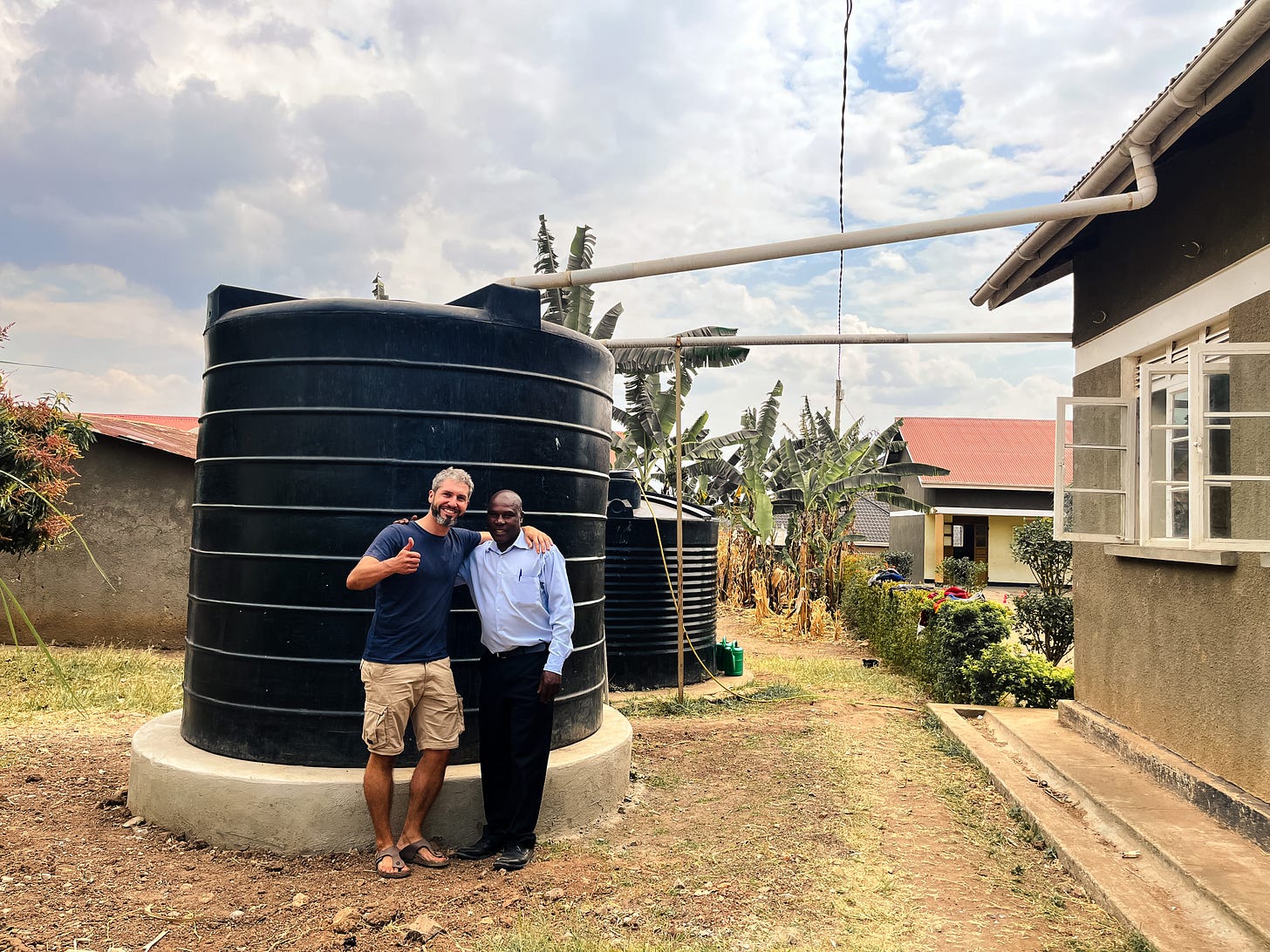If you were to drive around Uganda for only a couple of hours, one thing that would stand out in your memory afterwards would be massive black water tanks, some elevated on metal towers or roof tops, and others sitting on the ground connected by a pipe to the roof of a building. Domestic rainwater harvesting is common here, and with an average of 2032mm of rainfall a year, Uganda is an ideal location for the harvesting of rainwater as a primary source of clean water.
Rainwater harvesting tanks can be installed anywhere, once there is a nearby roof. The water runs of the corrugated steel roofs and into the gutters, which eventually flow into the water tanks. Since schools have relatively big roofs, as well as a huge demand for water, it is a no-brainer to install these systems at schools. Ngaara Primary School has had three 10,000 litre water tanks up and running for a while now, which happens to be their primary water source. When we arrived in Ngaara, right in the middle of the dry season, Headmistress Josephine told us that they were already running out of water. In order to meet the needs of the school (426 pupils and 30 staff) she has had to buy water from the town supplier, which is an expensive burden. We were able to make use of a 10,000 litre water tank that belonged to the school, but had not been installed due to a lack of funds. After hearing all of this, we knew that installing this additional water tank would be our number one priority. This tank should guarantee that there are minimal variable water costs in the future. This dry season has cost the school 520,000 UGX (130 EUR) in water fees.
A rainwater collection system is a relatively simple setup and comprises of a 10,000 litre polyethylene tank placed on a cement base with a gutter system that is attached to an existing metal roof. These systems will last around 30 years, providing clean water for thousands of people over their lifespan. We kicked off the water tank project by drawing up a budget with John, who is the engineer and the chairman of the parents committee at Ngaara. Needless to say, there were a couple of discussions before we were happy with the final budget…
Phase 1 of the project: constructing the base
Since a full water tank weighs 10 tonnes, the base where it sits must be extremely solid and level. The first step is selecting a location for the base - the base must be located such that the top of the tank remains below the edge of the roof. Once the location has been selected, measurements are taken to determine the base’s perimeter, and the digging starts. Once a solid foundation has been reached, the ground is levelled. The base itself is constructed using bricks, aggregate (hard core), and small stones. First the bricks are used to construct the perimeter wall and the bisecting support walls, which results in four quadrants inside the circular base. The space within the quadrants is then filled with aggregate and levelled out with smaller stones. The last step is pouring the platform - cement is mixed and poured on top of the small stones, smoothened out, and left to cure overnight.


Phase 2 - Installing the tank
Once the cement has dried, the 10,000l tank is rolled onto the base and rotated into position. Then it is time to install the overflow, which is a hole near the top of the tank that allows excess water to exit once the tank has reached capacity. The water outlet is also drilled at this point in time and is located about 5cm from the base of the tank - this is to prevent sediments from passing through into the tap.
Phase 3 - Installing the downspout
In order to optimise our costs, we chose to locate the tank beside a building that was already “guttered”. The gutters channel water from the roof to the tank, and during heavy rainfall the water flows freely. All we needed to install were the connecting downspouts, which run from the gutters to the tank inlet. All of the pipes and gutters are PVC.
Phase 4 - installation of the tap and then waiting patiently for rain
In this case, the water access point is not separate to the tank, and is located on the tank itself (as opposed to a tap stand a meter away). Once the tap has been installed, the harvesting system is complete and ready for the first rainfall of wet season. Any day now…
Thank you!
This water tank project was fully funded by the generous donations we received from our former colleagues at Credit Suisse Asset Management and Migros. Ngaara Primary School is extremely greatful for the additional water tank, and looks forward to harvesting an additional 10,000 litres of water in the near future.










